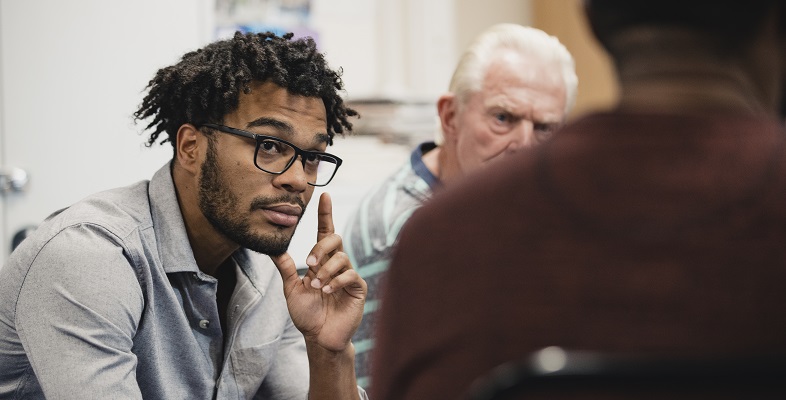Cycle of learning
Here is an example of how each of the element in Kolb’s cycle of learning was used to reflect on an experience of some voluntary work undertaken by a male practitioner. Read his concrete experience extract below and then think about what you would draw from this at each stage of the cycle of learning before reading what the practitioner in question took from the experience.
Concrete experience
About Susan
I was asked by the voluntary agency I worked for to go and speak to Susan, about coming to use our lunch club for older people. The social worker had said that they had already talked about it, and Susan was expecting someone to come and make the arrangements. I had written to make the appointment but when I arrived Susan did not appear to be expecting me. However she asked me in and I attempted to explain where I was from, and the referral from the social worker.
The room she invited me into appeared to be set up as a bedsit. It was very untidy and a bit smelly and was not helped by the fact that Susan had five or more cats wandering in and out. As is always the way, the cats were particularly keen to come and greet me, bring on my allergic asthmatic reaction and generally ignore my attempts to politely shun them. Susan was very deaf and it was difficult make myself understood. But it was clear she was not aware of the offer of the lunch club and didn’t think she would want to bother. Somebody from the council had been to speak to her a while ago but she wasn’t sure what that was about. She thinks they came because of her GP and they were going to get her something to do with the toilet downstairs.
I thanked Susan for her time and left saying I would get back to the social worker who had made the referral.
Observation and reflection
What observations and reflections would you take away from this experience? Here are some example responses that may be familiar to your own:
I came away worried about Susan’s situation. I wasn’t sure we communicated clearly because of her deafness. I don’t think she always heard what I was saying and so nodded or agreed to placate me.
I felt, with my general physical discomfort in the room, I hadn’t been very clear or assertive in my communication. I would just be another person wandering through her home.
It was easy to think of her as confused because of this, but I wasn’t sure if this was just because she hadn’t got the full picture.
Her situation wasn’t ideal, but I didn’t know if the social worker had made a proper assessment and had weighed up the balance of risk and choice.
I felt bad about doubting the thoroughness of the judgement of another professional about this situation and felt I should just know my place in the professional and service hierarchy – i.e. an unqualified worker in a voluntary agency.
Formation of abstract concepts and generalisations
What abstract concepts and generalisations might you take from this experience?
Service users sometimes have different priorities from those of agencies and their workers. It is important to be alert to this.
If someone is hearing-impaired then workers need to do everything they can to augment their communication and ensure they have been understood. For instance, the worker should sit in a good light so the person can see their face, be prepared with paper and pen to write down key messages, ask specific or closed questions to check they have been understood.
If you are confident the person has understood, choice and control is an important value base and this needs to be respected, even when people are making choices you don’t think are good ones. The judgement or assessment about risk, or even potentially safeguarding concern needs to be shared and recorded with the social worker involved so that they can ensure they are getting as full a picture as possible about someone’s situation.
Testing implications in new situations
What are the implications for new situations?
I decided to always carry a blank notebook and a clear felt tip pen with me to help communication if it was needed.
I got a card and leaflet from the agency with my name and number printed on it so that the person I visited could always have a record of where I had come from, or show it to other visitors.
I reported and discussed my anxieties with my supervisor. She suggested I phone the social worker and talk to them. I also wrote the social worker a letter to report what I had seen and Susan’s decision not to come to the lunch club.
